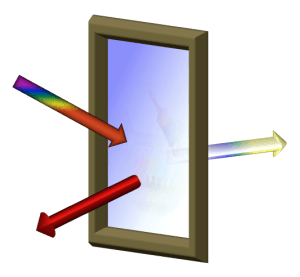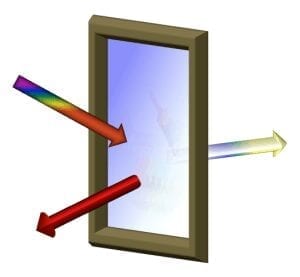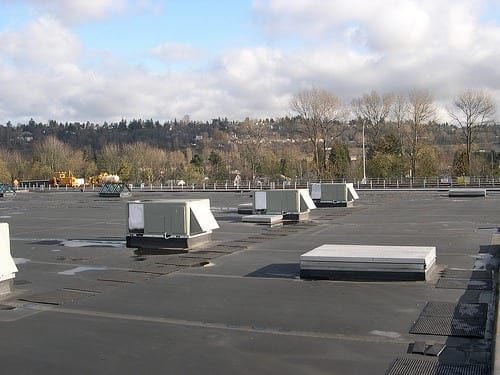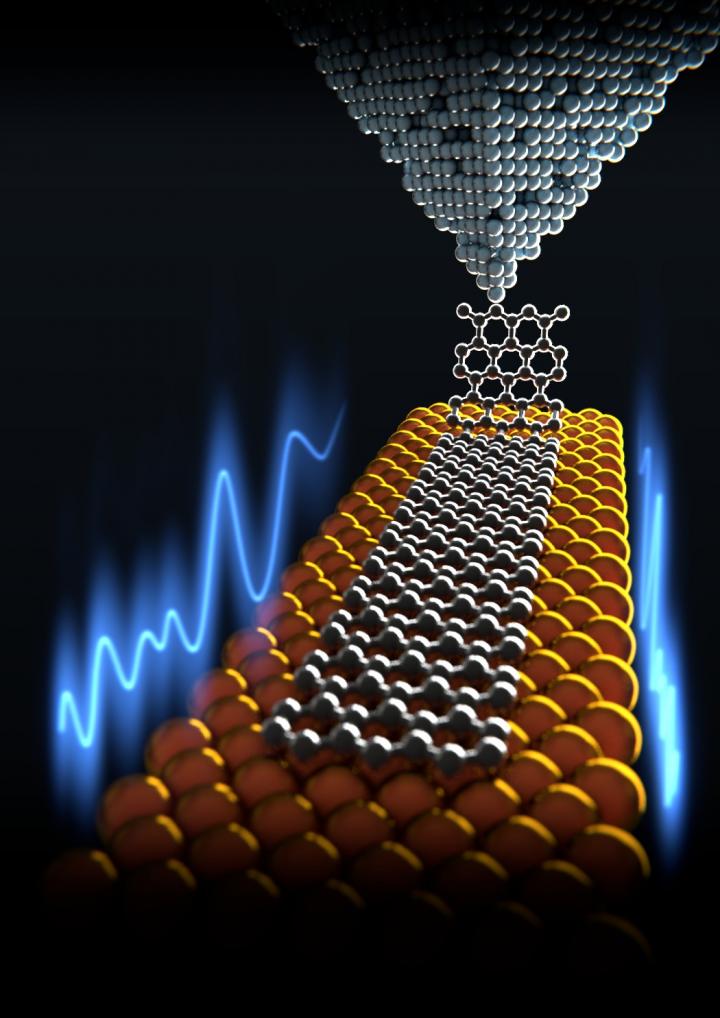
Low-cost coating would disrupt the building retrofit market and potentially save billions in electricity
It’s estimated that 10 percent of all the energy used in buildings in the U.S. can be attributed to window performance, costing building owners about $50 billion annually, yet the high cost of replacing windows or retrofitting them with an energy efficient coating is a major deterrent. U.S. Dept. of Energy (DOE)’s Lawrence Berkeley National Laboratory (Berkeley Lab) researchers are seeking to address this problem with creative chemistry—a polymer heat-reflective coating that can be painted on at one-tenth the cost.
“Instead of hiring expensive contractors, a homeowner could go to the local hardware store, buy the coating, and paint it on as a DIY retrofit—that’s the vision,” said Berkeley Lab scientist Raymond Weitekamp. “The coating will selectively reflect the infrared solar energy back to the sky while allowing visible light to pass through, which will drastically improve the energy efficiency of windows, particularly in warm climates and southern climates, where a significant fraction of energy usage goes to air conditioning.”
A team of Berkeley Lab scientists is receiving part of a $3.95 million award from the Department of Energy’s Advanced Research Projects Agency–Energy (ARPA-E) to develop this product. The multi-institutional team is led by researcher Garret Miyake at the University of Colorado Boulder, and also includes Caltech and Materia Inc.
There are retrofit window films on the market now that have spectral selectivity, but a professional contractor is needed to install them, a barrier for many building owners. A low-cost option could significantly expand adoption and result in potential annual energy savings of 35 billion kilowatt-hours, reducing carbon dioxide emissions by 24 billion kilograms per year, the equivalent of taking 5 million cars off the road.
The Berkeley Lab technology relies on a type of material called a bottlebrush polymer, which, as its name suggests, has one main rigid chain of molecules with bristles coming off the sides. This unusual molecular architecture lends it some unique properties, one being that it doesn’t entangle easily.
“Imagine spaghetti versus gummy worms,” Weitekamp explained. “Spaghetti can be tied up in knots. If you want to rearrange cooked spaghetti back to its uncooked alignment, you would have to put significant energy into unwinding it. But with gummy worms you can line them all up easily because they’re pretty rigid.”
As a graduate student at Caltech, Weitekamp worked on understanding and controlling how bottlebrush polymers self-assemble into nanostructures behaving as photonic crystals, which can selectively reflect light at different frequencies. Last year he came to Berkeley Lab as part of Cyclotron Road, a program for entrepreneurial researchers, to commercialize these coatings and other related polymer-based technologies. He has been working on the development of polymeric materials as a user at the Molecular Foundry, a DOE Office of Science User Facility at Berkeley Lab.
“We were very compelled by the potential impact of [Weitekamp’s] technology across a number of industries,” said Cyclotron Road director Ilan Gur. “His ideas aligned with the Foundry’s expertise in polymer chemistry and the window application fit squarely into Berkeley Lab’s existing strengths in buildings technology and energy analysis.”
For the ARPA-E award, Weitekamp is collaborating with Berkeley Lab’s Steve Selkowitz, a leading expert on building science and window technologies, and Arman Shehabi, an expert in analyzing energy use of buildings, to develop a cost-competitive and scalable product. Their target cost is $1.50 per square foot, one-tenth the current market cost for commercially installed energy efficient retrofit window coatings.
“ARPA-E invests in high-risk, high-reward projects,” Shehabi said. “The high reward in this project isn’t in the performance improvement. It’s transformative in how windows could be retrofitted—it’s something you can do yourself. The market need is very large, and there’s nothing low-cost out there that meets that need.”
Learn more: Berkeley Lab Scientists Developing Paint-on Coating for Energy Efficient Windows
The Latest on: Energy efficient windows
[google_news title=”” keyword=”energy efficient windows” num_posts=”10″ blurb_length=”0″ show_thumb=”left”]
via Google News
The Latest on: Energy efficient windows
- Windows & Doors Market Expected To Surpass USD 318.47 Billion By 2031, Driven By Unrelenting Construction Boomon May 8, 2024 at 10:57 pm
The global windows and doors market is experiencing remarkable growth, with a new SNS Insider report projecting it to ...
- Alpen to offer its multi-pane windows to other manufacturerson May 8, 2024 at 1:49 pm
Alpen High Performance Products Inc. will double its manufacturing space and extend its triple- and quad-pane window materials to other window manufacturers.
- You can reduce your energy bills by improving your home's EPC rating – experts explain howon May 8, 2024 at 8:00 am
Be sure to seal all cracks and gaps around windows and doors as part of this process. DIY draft-proofing is one of the cheapest and most effective ways to save energy and enhance the comfort of your ...
- How Curtains, Drapes and Blinds Can Save You Energyon May 8, 2024 at 6:00 am
Energy-efficient window treatments can keep your home comfortable and cut your utility bills up to 20%. Here's how they work and how to choose the right product.
- What is a home energy audit and when is it worth getting one?on May 2, 2024 at 11:00 pm
"An energy audit will typically include an inspection of a home's insulation, heating and cooling systems, appliances, lights, windows, and other components that affect the amount of energy used (and ...
- Department of Energy: The New Philosopher Kingon May 1, 2024 at 5:00 pm
We need the government to protect us from foreign invaders, not from drafty windows.” The same is true of home appliances, which the federal government now regulates for “energy efficiency.” Yet, the ...
- Discover 2024’s Top 10 Energy-Efficient Windows for Your Homeon May 1, 2024 at 10:30 am
In the quest for more sustainable living and significant reductions in energy bills, homeowners are turning to energy-efficient windows as a fundamental solution. These windows not only enhance the ...
- Discover 2024’s Top 10 Energy-Efficient Windows for Your Homeon May 1, 2024 at 6:30 am
homeowners are turning to energy-efficient windows as a fundamental solution. These windows not only enhance the aesthetic appeal of a home but also play a crucial role in improving home comfort ...
- ENERGY STAR Window Ratings Explained (2024)on April 29, 2024 at 5:00 pm
Windows that allow heated or cooled air to leak outside are less efficient. A low air leakage rating is desirable no matter what climate you live in, and an ENERGY STAR-rated window should have ...
- How Much Do Energy-Efficient Windows Cost? (2024)on April 29, 2024 at 5:00 pm
We’ll explain what makes a window energy-efficient and outline the available styles and options. *Article cost data via Angi and Fixr. Large or complex windows cost more than smaller ones.
via Bing News











